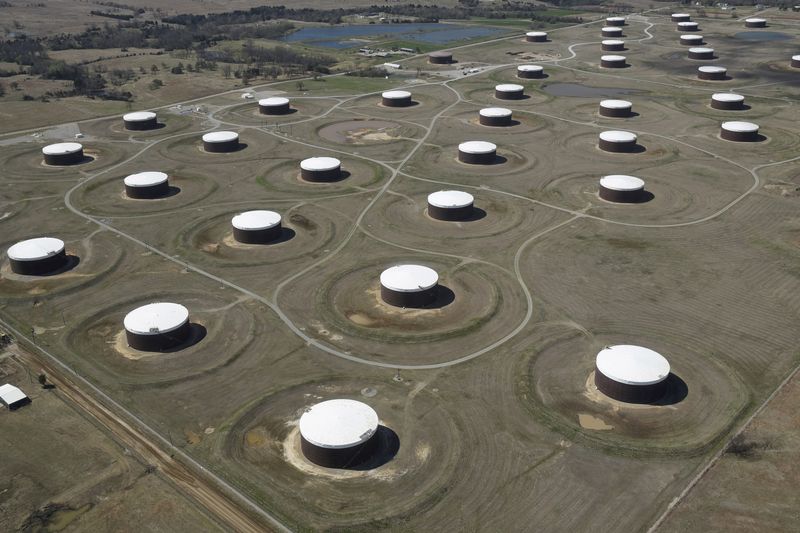By David Gaffen
NEW YORK (Reuters) -Oil prices dropped nearly 2% on Wednesday, pulling back from multi-year highs, as an unexpected rise in U.S. crude inventories prompted buyers to take a breather after recent torrid gains.
U.S. crude inventories rose by 2.3 million barrels last week, against expectations for a modest dip of 418,000 barrels, the U.S. Energy Department said. Gasoline inventories also rose, while distillate inventories were down only modestly. [EIA/S]
Brent crude hit $83.47 a barrel, its highest since October 2018, but settled at $81.08, down $1.48 a barrel, or 1.8%. U.S. crude climbed to $79.78, highest since November 2014, before retreating to $77.43 for a daily decline of $1.50 or 1.9%.
“We saw some profit taking as oil had run up significantly,” said Gary Cunningham, director at Tradition Energy in Stamford, Conn.
The price of global benchmark Brent has surged more than 50% this year, adding to inflationary pressure that could slow recovery from the COVID-19 pandemic. Natural gas has surged to a record peak in Europe and coal prices from major exporters have also hit all-time highs.
The latest surge in the crude prices had been underpinned by the refusal of the Organization of the Petroleum Exporting Countries and allies to boost output and concern about tight energy supplies globally.
On Monday, OPEC, Russia and other allies, known as OPEC+, chose to stay with a plan to increase output gradually and not boost it further as the United States and other consumer nations have been urging.
The market slipped late in the day after U.S. Energy Secretary Jennifer Granholm, speaking to the Financial Times, broached the possibility that the United States could combat higher prices by either releasing oil from strategic reserves or potentially halting crude exports.
Oil priced dropped following that news, but the decline was modest. The United States ended a 40-year ban on crude exports in late 2015 and now ships out more than 3 million barrels of crude daily. “I don’t think we’re at a point where we want to limit exports of crude oil or natural gas,” Cunningham said.
U.S. production increased to 11.3 million barrels per day, recovering from storm-related shut-ins more than a month ago to rebound near pandemic-level highs but still far from the 13-million bpd record set in 2019. [EIA/S]
With shale companies constraining drilling to concentrate on investor returns, U.S. output has not offset the OPEC+ cutbacks.
(Additional reporting by Naveen Thukral; Editing by Marguerita Choy, Emelia Sithole-Matarise and David Gregorio)

























